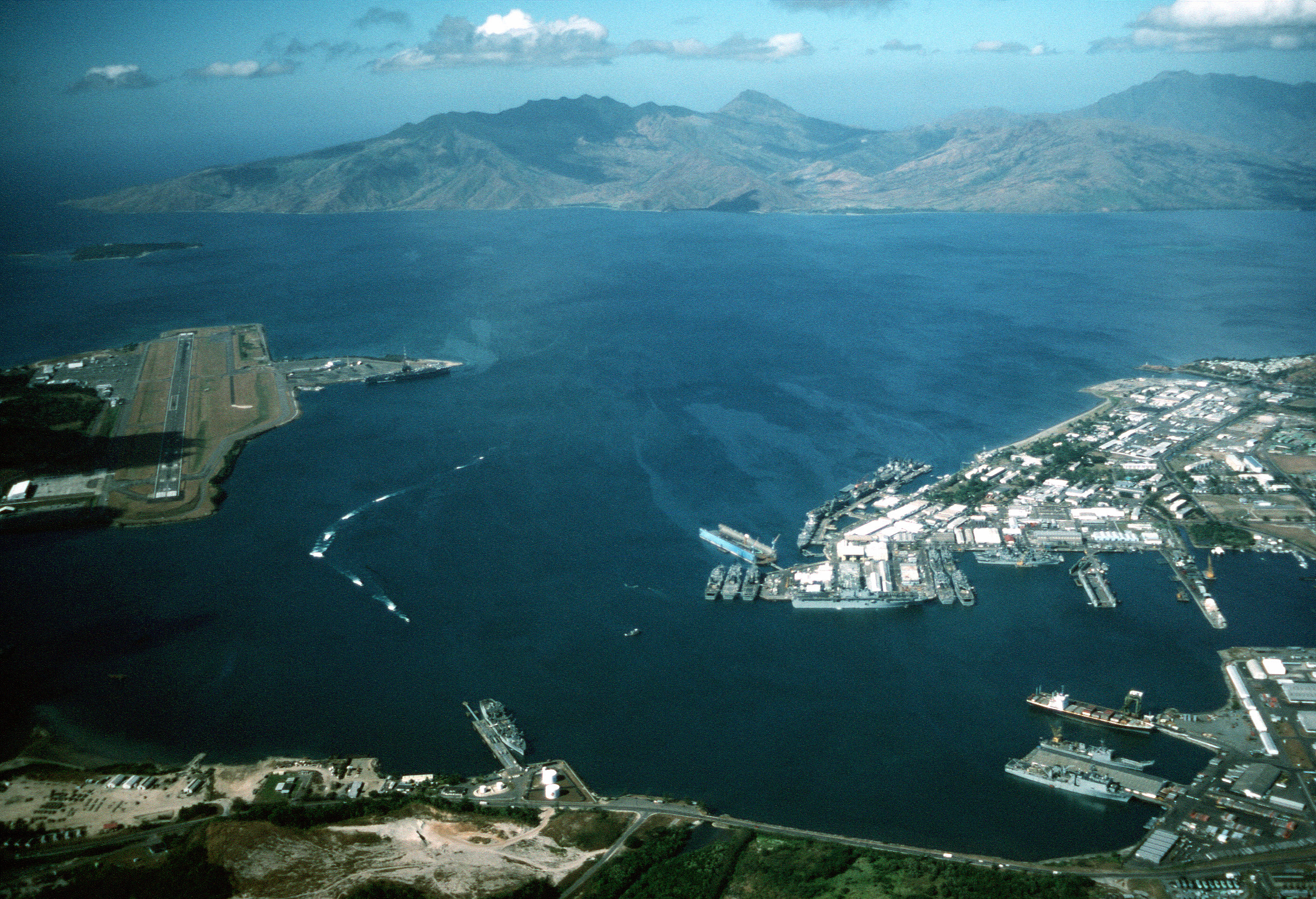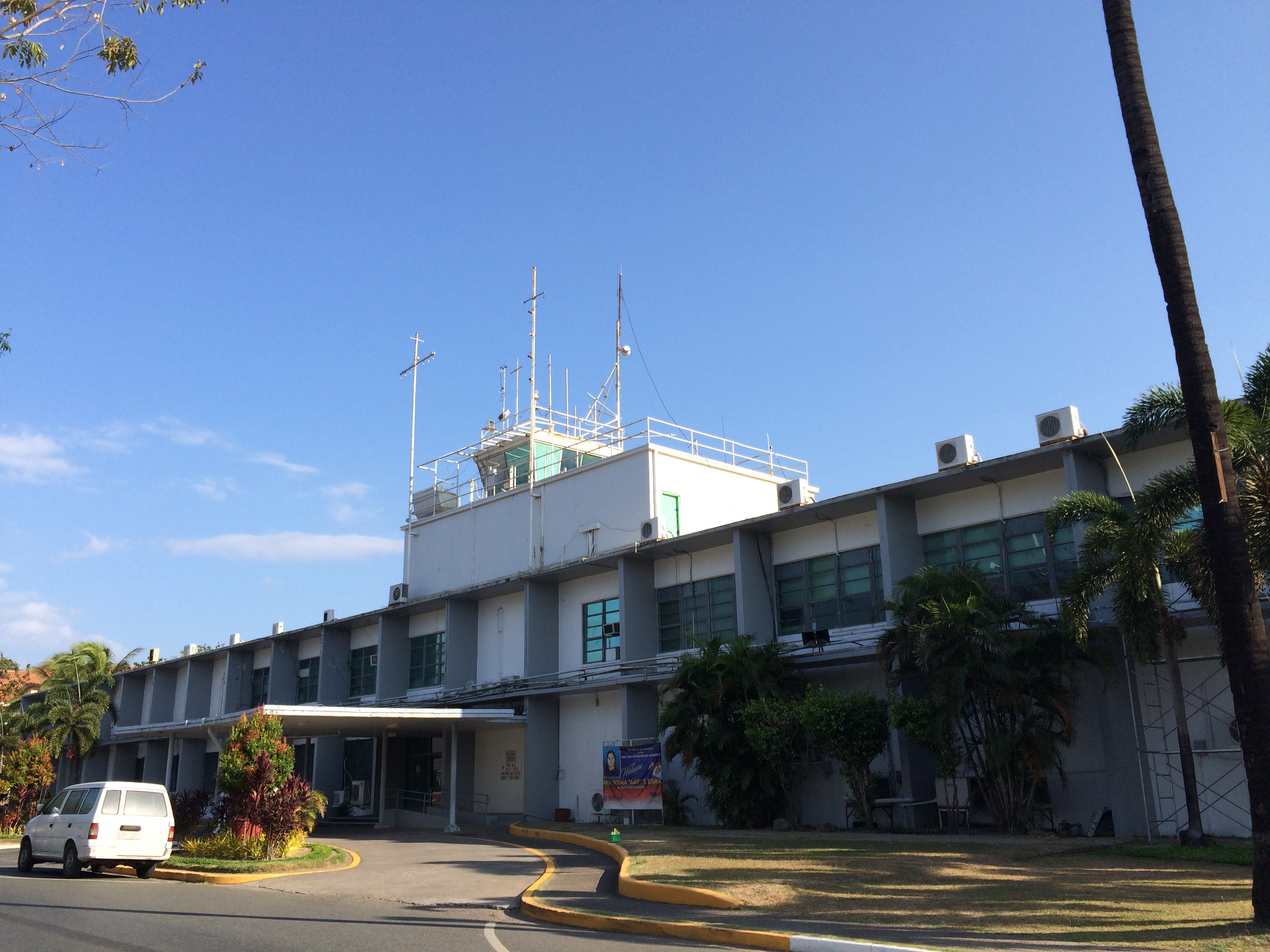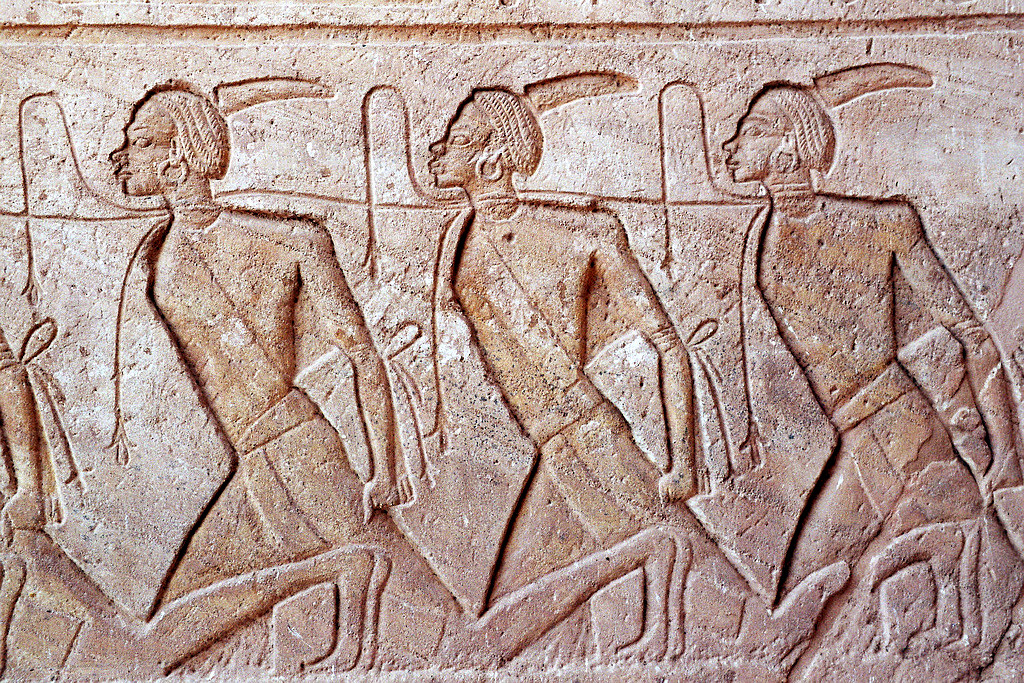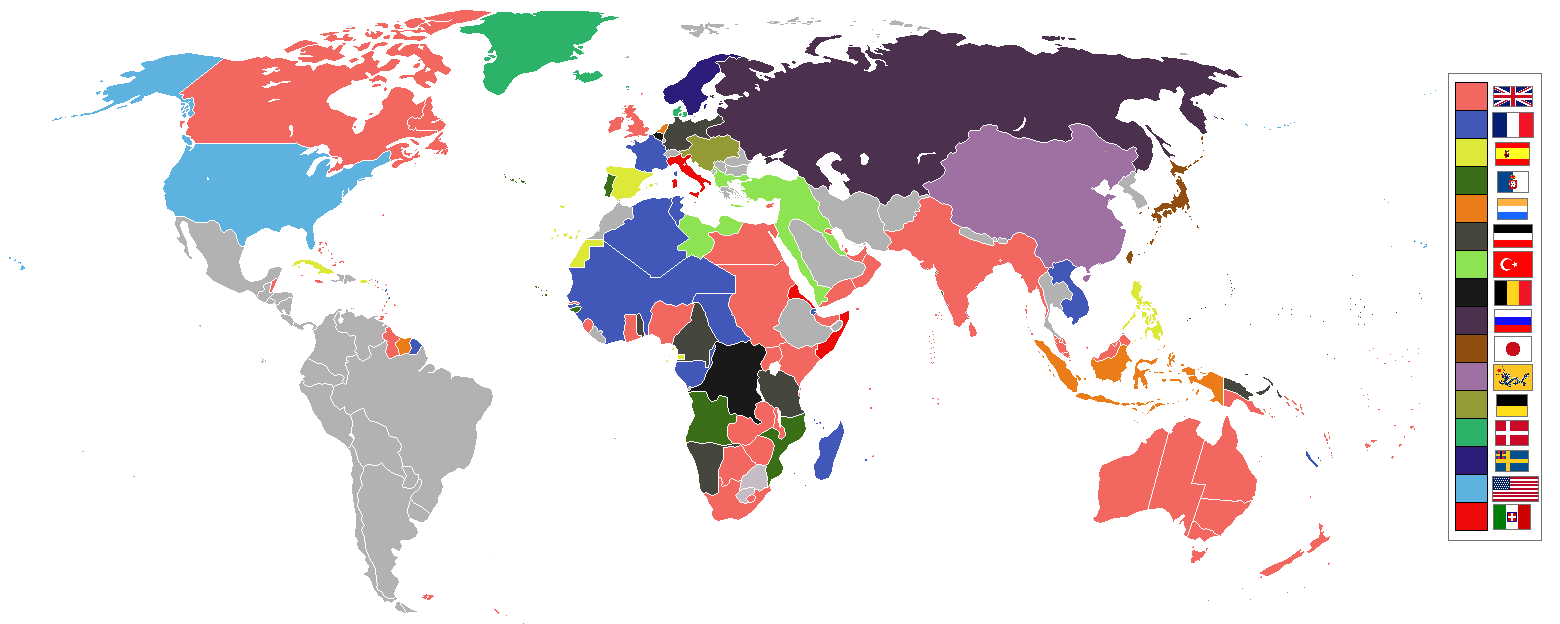|
Subic Bay
Subic Bay is a bay on the west coast of the island of Luzon in the Philippines, about northwest of Manila Bay. An extension of the South China Sea, its shores were formerly the site of a major United States Navy facility, U.S. Naval Base Subic Bay, now an industrial and commercial area known as the Subic Bay Freeport Zone under the Subic Bay Metropolitan Authority. Today, water as well as the towns and establishments surrounding the bay are collectively known as Subic Bay. This includes the former naval base, Hanjin shipyard Subic, Hanjin shipyard, Olongapo city, the municipal town of Subic, Zambales, Subic, and the erstwhile US defense housing areas of Binictican and Kalayan housing, up to Morong, Bataan. The bay was long recognized for its deep and protected waters, but development was slow due to lack of level terrain around the bay. History In 1542, Spanish conquistador Juan de Salcedo sailed into Subic Bay but no port developed there because the main Spanish naval base ... [...More Info...] [...Related Items...] OR: [Wikipedia] [Google] [Baidu] |
Subic Bay Freeport Zone
The Subic Special Economic and Freeport Zone, often shortened as Subic Bay or Subic, is a special economic zone and List of free ports, freeport area covering portions of the city of Olongapo and the town of Subic, Zambales, Subic in Zambales, and the towns of Hermosa, Bataan, Hermosa and Morong, Bataan, Morong in Bataan in the Philippines. The relatively developed and fenced area is called the Subic Bay Freeport Zone (SBFZ). The economic zone was the location of U.S. Naval Base Subic Bay, until the latter's decommissioning in 1992. The SBFZ is operated and managed by the Subic Bay Metropolitan Authority (SBMA). The harbor faces the Zambales Mountains to the west and Subic Bay opens to the South China Sea. History Subic Bay is surrounded by the towns of Hermosa, Bataan, Hermosa, Morong, Bataan, Morong, and Subic, Zambales, Subic, and the city of Olongapo in the provinces of Bataan and Zambales, respectively. The Spanish built a shipyard and naval base in Subic bay in the 1800s ... [...More Info...] [...Related Items...] OR: [Wikipedia] [Google] [Baidu] |
Subic Bay Metropolitan Authority
The Subic Bay Metropolitan Authority (SBMA; ) is a governmental agency of the Philippines. The SBMA has played a significant part in the development of the Subic Special Economic and Freeport Zone into a self-sustainable area that promotes the industrial, commercial, investment, and financial areas of trade in the zone as well as in the Philippines itself. The area of jurisdiction of the SBMA includes the erstwhile U.S. Naval Base Subic Bay, parts of Redondo peninsula where the Subic Hanjin shipyard is located, and erstwhile US defence accommodations in the hills consisting of Binictican and Kalayan housing areas. The agency is currently headed by Eduardo L. Aliño as of January 22, 2024. His predecessor as Chairman and Administrator from 2023 to 2024 was former Pandan, Antique mayor Jonathan Tan. History On March 13, 1992, the Philippine Congress passed Republic Act 7227, known as the Bases Conversion and Development Act of 1992, in anticipation of the pullout of the US ... [...More Info...] [...Related Items...] OR: [Wikipedia] [Google] [Baidu] |
Luzon Island
Luzon ( , ) is the largest and most populous island in the Philippines. Located in the northern portion of the Philippine archipelago, it is the economic and political center of the nation, being home to the country's capital city, Manila, as well as Quezon City, the country's most populous city. With a population of 64 million , it contains 52.5% of the country's total population and is the 4th most populous island in the world. It is the 15th largest island in the world by land area. ''Luzon'' may also refer to one of the three primary island groups in the country. In this usage, it includes the Luzon Mainland, the Batanes and Babuyan groups of islands to the north, Polillo Islands to the east, and the outlying islands of Catanduanes, Marinduque and Mindoro, among others, to the south. The islands of Masbate, Palawan and Romblon are also included, although these three are sometimes grouped with another of the island groups, the Visayas. Etymology The name ' ... [...More Info...] [...Related Items...] OR: [Wikipedia] [Google] [Baidu] |
Philippine–American War
The Philippine–American War, known alternatively as the Philippine Insurrection, Filipino–American War, or Tagalog Insurgency, emerged following the conclusion of the Spanish–American War in December 1898 when the United States annexed the Philippine Islands under the Treaty of Paris (1898), Treaty of Paris. Philippine nationalists constituted the First Philippine Republic in January 1899, seven months after signing the Philippine Declaration of Independence. The United States did not recognize either event as legitimate, and tensions escalated until fighting commenced on February 4, 1899, in the Battle of Manila (1899), Battle of Manila. Shortly after being denied a request for an armistice, the Philippine Council of Government issued a proclamation on June 2, 1899, urging the people to continue the war. Philippine forces initially attempted to engage U.S. forces conventionally but transitioned to guerrilla tactics by November 1899. Philippine President Emilio Aguinaldo w ... [...More Info...] [...Related Items...] OR: [Wikipedia] [Google] [Baidu] |
Prisoner Of War
A prisoner of war (POW) is a person held captive by a belligerent power during or immediately after an armed conflict. The earliest recorded usage of the phrase "prisoner of war" dates back to 1610. Belligerents hold prisoners of war for a range of legitimate and illegitimate reasons. These may include isolating them from enemy combatants still in the field (releasing and Repatriation, repatriating them in an orderly manner after hostilities), demonstrating military victory, punishment, prosecution of war crimes, labour exploitation, recruiting or even conscripting them as combatants, extracting collecting military and political intelligence, and political or religious indoctrination. Ancient times For much of history, prisoners of war would often be slaughtered or enslaved. Early Roman gladiators could be prisoners of war, categorised according to their ethnic roots as Samnites, Thracians, and Gauls (''Galli''). Homer's ''Iliad'' describes Trojan and Greek soldiers offeri ... [...More Info...] [...Related Items...] OR: [Wikipedia] [Google] [Baidu] |
Hell Ship
A hell ship is a ship with extremely inhumane living conditions or with a reputation for cruelty among the crew. It now generally refers to the ships used by the Imperial Japanese Navy and Imperial Japanese Army to transport Allied prisoners of war in Japan, Allied prisoners of war (POWs) and ''rōmusha'' (Asian forced slave laborers) out of the Philippines, the Dutch East Indies, Hong Kong, and Singapore in World War II. These POWs were taken to the Empire of Japan, Japanese Islands, Taiwan under Japanese rule, Formosa, Manchukuo, Korea under Japanese rule, Korea, the Maluku Islands, Moluccas, Sumatra, Burma, or Thailand, Siam to be used as forced labor. Etymology During the American Revolutionary War, Patriot (American Revolution), Patriot prisoners of war sometimes referred to British prison ships they were held in using the terms "hell" and "hell ship". Captured Patriot military personnel who refused to swear allegiance to the Crown during the conflict were Prisoners of war i ... [...More Info...] [...Related Items...] OR: [Wikipedia] [Google] [Baidu] |
USS Majaba (AG-43)
USS ''Majaba'' (AG-43/IX-102) was the Design 1049 cargo ship ''Meriden'' built in 1919 by the Albina Engine & Machine Works, Portland, Oregon. All the ships were requisitioned by the United States Shipping Board (USSB) for World War I service. The ship was bought by the E. K. Wood Lumber Co., of San Francisco, California in 1923 and renamed ''El Capitan''. The ship was chartered by the U.S. Navy through the War Shipping Administration (WSA) in April 1942 and commissioned as ''Majaba''. ''Majaba'' was assigned to operations in the South Pacific Ocean and at Guadalcanal she was struck by a torpedo and beached. After salvage, towing, removal of engines and repair at Tulagi the ship served as a barracks, storage ship and repair ship until the end of the war. In October 1945 WSA requisitioned the title from the owner. ''Majaba'' continued service at Tulagi until she was towed to the Philippines in 1945. The ship was redelivered to WSA on 14 March 1946, placed in the reserve fleet a ... [...More Info...] [...Related Items...] OR: [Wikipedia] [Google] [Baidu] |
Imperial Japanese Army
The Imperial Japanese Army (IJA; , ''Dai-Nippon Teikoku Rikugun'', "Army of the Greater Japanese Empire") was the principal ground force of the Empire of Japan from 1871 to 1945. It played a central role in Japan’s rapid modernization during the Meiji period, fought in numerous conflicts including the First Sino-Japanese War, the Russo-Japanese War, World War I, the Second Sino-Japanese War, and World War II, and became a dominant force in Japanese politics. Initially formed from domain armies after the Meiji Restoration, it evolved into a powerful modern military influenced by French and German models. The IJA was responsible for several overseas military campaigns, including the invasion of Manchuria, involvement in the Boxer Rebellion, and fighting across the Asia-Pacific during the Pacific War. Notorious for committing widespread Japanese war crimes, war crimes, the army was dissolved after Japan's surrender in 1945, and its functions were succeeded by the Japan Ground Self-D ... [...More Info...] [...Related Items...] OR: [Wikipedia] [Google] [Baidu] |
Pacific War
The Pacific War, sometimes called the Asia–Pacific War or the Pacific Theatre, was the Theater (warfare), theatre of World War II fought between the Empire of Japan and the Allies of World War II, Allies in East Asia, East and Southeast Asia, the Pacific Ocean, Pacific and Indian Oceans, and Oceania. It was geographically the largest theatre of the war, including the Pacific Ocean theater of World War II, Pacific Ocean theatre, the South West Pacific theater of World War II, South West Pacific theatre, the Second Sino-Japanese War, and the brief Soviet–Japanese War, and included some of the Largest naval battle in history, largest naval battles in history. War between Japan and the Republic of China (1912–1949), Republic of China had begun in 1937, with hostilities dating back to Japanese invasion of Manchuria, Japan's invasion of Manchuria in 1931, but the Pacific War is more widely accepted to have started in 1941, when the United States and United Kingdom entered the ... [...More Info...] [...Related Items...] OR: [Wikipedia] [Google] [Baidu] |
Spanish–American War
The Spanish–American War (April 21 – August 13, 1898) was fought between Restoration (Spain), Spain and the United States in 1898. It began with the sinking of the USS Maine (1889), USS ''Maine'' in Havana Harbor in Cuba, and resulted in the U.S. acquiring sovereignty over Puerto Rico, Guam, and the Philippines, and establishing a protectorate over Cuba. It represented U.S. intervention in the Cuban War of Independence and Philippine Revolution, with the latter later leading to the Philippine–American War. The Spanish–American War brought an end to almost four centuries of Spanish presence in the Americas, Asia, and the Pacific; the United States meanwhile not only became a major world power, but also gained several island possessions spanning the globe, which provoked rancorous debate over the wisdom of expansionism. The 19th century represented a clear decline for the Spanish Empire, while the United States went from a newly founded country to a rising power. In 1895, C ... [...More Info...] [...Related Items...] OR: [Wikipedia] [Google] [Baidu] |
Ambala Language
Ambala is a Sambalic language spoken in the Philippines. It has more than 2,000 speakersRamos 2004 and is spoken within Aeta communities in the Zambal municipalities of Subic, San Marcelino, and Castillejos; in the city of Olongapo; and in Dinalupihan, Bataan. Reid (1994) reports the following Ambala locations, from SIL word lists: *Maliwacat, Cabalan, Olongapo, Zambales *Batong Kalyo (Pili), San Marcelino, Zambales Himes (2012) also collected Ambala data from the following locations: *Pastolan, Subic Bay Metropolitan Authority *Gordon Heights, Olongapo City See also *Languages of the Philippines There are some 130 to 195 languages spoken in the Philippines, depending on the method of classification. Almost all are Malayo-Polynesian languages native to the archipelago. A number of Spanish-influenced creole language, creole varieties ge ... References Endangered Austronesian languages Sambalic languages Aeta languages Languages of Zambales Languages of ... [...More Info...] [...Related Items...] OR: [Wikipedia] [Google] [Baidu] |








